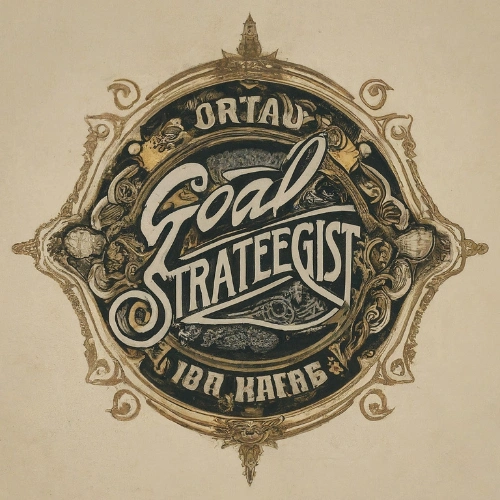Diving into the world of Agile, you’ve likely heard about iteration goals, but do you know their true purpose? These goals are the compass that guides your team through the Agile process, ensuring everyone’s on the same page. They’re not just to-do lists; they’re the heartbeat of each sprint.
Understanding iteration goals is crucial for your project’s success. They provide a clear focus, help manage priorities, and ensure that every task aligns with the bigger picture. Let’s unravel the true statements about iteration goals and why they matter to your team’s workflow.
What are iteration goals?
When you’re immersed in the Agile methodology, iteration goals are a fundamental focus point. Iteration goals are specific, tangible objectives set for each iteration, or sprint, within an Agile project. Unlike a simple checklist of tasks, these goals encapsulate the value and purpose underlying each step your team takes.
With iteration goals, you’re looking at a blend of several things:
- A brief, high-level description of what the team should accomplish during the iteration.
- The anticipated impact or benefit to the stakeholders or the project.
- A guiding beacon for decision-making, helping to prioritize tasks and manage resources effectively.
Remember, iteration goals must be achievable within the timeframe of a single iteration. They’re designed to be reached through a series of tasks and user stories that contribute to the bigger project objectives.
Setting Clear Roadmaps
The iteration goals act as a roadmap driving the team’s efforts throughout the Agile process. They are less about ticking off items on a list and more about moving the project forward in a meaningful way.
Here’s how iteration goals serve your team:
- Clarity: By having a clear goal, every team member knows exactly what they’re working toward.
- Alignment: Goals help keep everyone on the same page, aligning individual work with the team’s objectives.
- Focus: With clear targets, distractions are minimized, and productivity rises.
- Progress Tracking: Iteration goals provide a way to measure progress, offering real-time insights into the team’s work.
The iteration’s success isn’t just based on completing tasks; it’s about achieving these goals that drive the overarching vision of your project. You’ll find that by focusing on iteration goals, the team gains a strong sense of purpose, and this enhances both morale and momentum throughout the development lifecycle.
The purpose of iteration goals
When tackling a complex project, having specific objectives helps keep your team on track. This is where iteration goals come into play in an Agile environment. They serve a multi-faceted purpose designed to maximize efficiency and output each sprint. You’ll find that these goals are central to fostering a culture of continuous improvement.
Firstly, iteration goals establish expectations. Clear objectives ensure that every team member understands what needs to be accomplished during the sprint. This shared clarity eliminates ambiguity, allowing everyone to work towards a united outcome. It’s not just about ticking off tasks; it’s about reaching a common destination together.
Moreover, iteration goals aid in prioritization. Amidst the myriad of possible tasks, knowing your iteration’s focus can be a beacon of guidance. It’s about identifying what’s crucial for this sprint’s success. This strategic approach helps avoid wasted time on low-impact activities, maximizing your sprint’s value.
Another pivotal aspect is motivation and progress tracking. Iteration goals can act as motivational tools that provide mini-milestones for your team to strive towards. Progress against these goals is usually quantifiable, enabling the team to measure their speed and efficiency. Witnessing tangible progress provides a sense of accomplishment that fuels drive and maintains momentum.
Lastly, iteration goals enhance flexibility and adaptability. Agile thrives on the ability to pivot as necessary, and these goals help highlight when changes are needed. If you find your team repeatedly missing targets, it’s a red flag that processes may need reevaluation. Conversely, consistently achieving goals signals a strong process foundation and the potential to push boundaries further.
Remember, iteration goals aren’t just deliverables; they encompass the quality, functionality, and viability of the sprint outcome. They’re the linchpins of Agile methodology, ensuring that every iteration contributes to the larger product vision in a measurable and meaningful way.
How iteration goals provide focus
When you’re working within an Agile framework, iteration goals are the beacon leading your team to success. By defining clear, specific objectives for each sprint, iteration goals home in on what’s crucial, enabling you to steer clear of distractions that don’t serve the sprint’s purpose.
Clearly defined iteration goals streamline your team’s efforts. They operate as a yardstick, allowing team members to measure their progress real-time. This clarity eliminates confusion around priorities — if a task doesn’t align with the sprint’s goals, it’s set aside for now.
Moreover, iteration goals drive cross-functional collaboration. When multiple departments understand the sprint targets, they’re more likely to pool their expertise to reach a common objective. Hence, these goals promote a shared focus that transcends individual roles.
Here’s how iteration goals sharpen your project focus:
- Prioritization: They simplify decision-making by establishing what features or tasks are imperative.
- Clarity: Team members have a transparent understanding of what needs to be accomplished.
- Alignment: Ensures everyone’s efforts are pushing in the same direction.
Remember, focused iteration goals lead to tangible outcomes. For instance, a goal might be to enhance the user experience on the checkout page. By targeting this specific element, the team can concentrate all its energy on developing solutions that directly impact that goal.
Iteration goals are not only about zeroing in on the task at hand; they also recognize the importance of what’s omitted. By defining what’s out of scope, teams can maintain a laser-like focus on the objectives that matter most during the sprint.
To keep your iteration goals sharply focused, avoid vague language. Instead, employ actionable terms that leave no room for ambiguity. This precision not only aids your team but also provides stakeholders with a clear picture of where the sprint is heading.
Implementing well-focused iteration goals is a game-changer in how you approach your sprints. It’s about making every task count and every effort align perfectly with your short-term objectives while staying true to the broader vision of the product.
Managing priorities with iteration goals
When you’re embroiled in the Agile process, effectively managing priorities is key to your team’s success. Iteration goals play a pivotal role in this aspect as they provide a framework to distinguish between high-priority tasks and those that can take a backseat. By setting these goals at the start of every sprint, you’re equipped to strategically align your efforts with the most important features or fixes.
Here are several ways iteration goals streamline your priority management:
- Clarification of objectives: Each team member gains a transparent understanding of what needs to be achieved in the immediate sprint.
- Focus on delivery: Your team zeroes in on completing tasks that directly contribute to the iteration goal, ensuring a consistent flow of value to your stakeholders.
- Adaptability to change: As priorities shift, iteration goals guide you in adjusting the sprint backlog accordingly without losing sight of your end goals.
Iteration goals act as a beacon, helping to guide decision-making throughout the sprint. When faced with multiple tasks, you can weigh them against the iteration goal to determine which action will provide the maximum impact. This helps maintain momentum and avoid the common pitfall of getting caught up in less significant tasks that do not contribute to the sprint’s objectives.
Metrics are a tangible way to trace the success of managing priorities. Teams that leverage iteration goals often see an improvement in key performance indicators such as sprint burndown rates and velocity. By keeping a close eye on these metrics, you gain insights into how effectively the team is staying on track and whether the prioritization process needs fine-tuning for future sprints.
Remember, iteration goals are not just about what you will deliver, but also about what you won’t. This conscious emphasis on non-goals is as important as the drive towards achieving your designated targets. Identifying non-goals helps to prevent scope creep and ensures the team does not dilute their efforts on lower priority tasks.
Why iteration goals matter to your team’s workflow
Iteration goals are the backbone of your team’s workflow, setting the rhythm and expectations for each sprint. When you define these goals clearly, your team gains a shared understanding of what needs to be accomplished, which is crucial for collaboration and productivity.
The importance of iteration goals cannot be overstated. They offer several benefits:
- Alignment: With predefined objectives, everyone on your team is working toward the same end. This coherence ensures that you’re not just busy, but productive—each task contributes to a common aim.
- Prioritization: Knowing what’s most important allows your team to work on features that deliver the most value first. This means you’re always working on what matters most.
- Trackability: You can monitor progress with ease. Clear iteration goals make it simple to see if you’re on track or if adjustments are necessary, well before deadlines loom.
Through iteration goals, you effectively manage workflow interruptions that could otherwise derail productivity. If a new task crops up, you weigh it against your iteration goals before deciding whether it’s worth the diversion.
Furthermore, having a defined set of iteration goals helps in tackling complex projects by breaking them into manageable segments. This method makes daunting tasks less intimidating and enhances your team’s sense of accomplishment with each goal met.
Your team’s morale and motivation are byproducts of effective iteration goal setting. Achieving these miniature milestones gives a sense of progress and keeps spirits high, which is particularly important in maintaining momentum during longer sprints.
Remember, iteration goals are not set in stone. They provide a framework for adaptability, which is indispensable in the Agile environment. As priorities shift, your goals can be re-evaluated and tweaked to reflect new information or customer feedback.
Using iteration goals not only supports your team’s workflow, but also amplifies efficiency within your Agile process. By incorporating them into your regular planning sessions, you ensure that every sprint is a step forward in the right direction.
Conclusion
You’ve seen the undeniable value iteration goals bring to the Agile process. They’re not just a box to check off; they’re a strategic tool that keeps your team aligned and moving forward. By embracing iteration goals, you’re equipping your team to handle the ebbs and flows of project management with agility and precision. Remember, these goals are your roadmap to success, helping you navigate through complexities and keeping your team’s eyes on the prize. Make them a non-negotiable part of your planning, and watch your team’s productivity and morale soar.


Leave a Reply